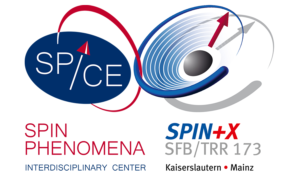We are delighted to see the enormous interest in the new Online SPICE-SPIN+X Seminars. We had 500 participants in Zoom (to capacity) and over 300 watching life on YouTube. Tomas Jungwirth gave the inaugural seminar on Antiferromagnetic spintronics: from memories to ultra-fast optics and topological transport. His talk is available on the SPICE YouTube Channel and can also be reached to the direct link here.

To receive by e-mail the Zoom Meeting log-in information and the announcements, please sign up to the seminars e-mail list (no further announcements on the on-line seminars will be sent by the news-from-spice mailing list). You can click here for the e-mail list sign-up form or find it directly at the SPICE-SPIN+X Seminars website.

 In the time of physical distancing, it is more important than ever to remain close socially and scientifically. The Spin Phenomena Interdisciplinary Center SPICE and the Collaborative Research Center SPIN+X have joined forces to start a weekly condensed matter seminar series with an emphasis on spin and topological physics.
In the time of physical distancing, it is more important than ever to remain close socially and scientifically. The Spin Phenomena Interdisciplinary Center SPICE and the Collaborative Research Center SPIN+X have joined forces to start a weekly condensed matter seminar series with an emphasis on spin and topological physics.





